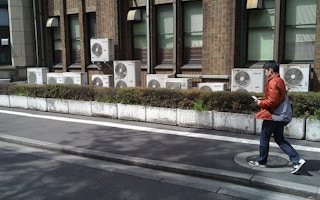In October, almost 200 nations agreed to an amendment of the Montreal Protocol that will see the emissions of hydrofluorocarbons (HFCs), a type of greenhouse gas used in fridges, air conditioning units and aerosols, phased out. This one action is expected to reduce global temperature rise by the end of the century by 0.5°C, a third of the 1.5°C cap agreed under the Paris Agreement.
As a major player in the chemicals industry, and the world’s biggest producer of HFCs, China’s agreement was crucial to the deal and to global action on climate change. But reducing HFCs by 2045 to 20 per cent of the historical peak will be a challenge.
Hu Jianxin, a professor at Peking University’s College of Environmental Sciences and Engineering, helped negotiate the new amendment. He is sure China can fulfil its commitment: “There will be difficulties and challenges, but I’m confident China can do it.”
The fall of HFCs
HFCs are manmade refrigerants that were introduced in the late 1980s when the Montreal Protocol was first signed. They are not damaging to the ozone layer unlike the chlorofluorocarbons (CFCs) and hydrochlorofluorocarbons (HCFCs) they replaced. But they are powerful greenhouse gases.
In fact, some HFCs are thousands of times more effective than carbon dioxide at trapping solar radiation. According to targets in the new amendment, by phasing out HFCs by 2050, China will avert the release of 43 billion tonnes of carbon dioxide (CO2) equivalent, four or five times China’s current annual CO2 emissions.
“
There will be difficulties and challenges, but I’m confident China can do it.
Hu Jianxin, professor, College of Environmental Sciences and Engineering, Peking University
A challenge to implement
China produces over 60 per cent of the world’s HFCs, according to the China Association of Fluorine and Silicon Industries. Phasing out HFCs will be particularly challenging for the country because it manufactures the chemicals, and the appliances that use them, in such huge quantities as well as the appliances that use them.
HFCs are essential to the function of a wide range of applications such as refrigerants, foaming agents and cleaning products. As a refrigerant, HFCs are found in domestic and vehicle air conditioners, and refrigeration systems, where they act almost as the “blood”. Replacing HFCs means re-designing products and components, and possibly using new materials; an enormous undertaking by industry strandards.
The enormous scale of China’s chemicals and manufacturing sectors means that phasing out HFC will be expensive.
Zheng Dongfang, senior engineer at the Zhejiang Chemical Industry Research Institute, concedes that changes to refrigeration technology will put firms under pressure. One insider, who preferred to remain anonymous, admitted that the industry would prefer to continue profiting from HFCs but acknowledges that as a responsible country China must sometimes put politics and the environment before economic development.
More troublesome is that HFCs were originally introduced as an alternative to other chemicals that damage the ozone layer – and that replacement process in China is not yet complete. China remains the world’s biggest producer and user of ozone depleting substances. In 2015, more than half of China’s air conditioners relied on refrigerants containing chlorine.
Under the Montreal Protocol, it was only last year that China started reducing production of HCFCs in favour of HFCs, a process that could take until 2040. In other words, China now has 20 years to phase out two generations of refrigerants.
Global changes hit Chinese manufacturing
Securing an amendment to the Montreal Protocol required countries to acknowledge differences between developing and developed nations. Three timetables for phasing out HFCs were agreed on: one for developed nations, which must deliver a 10 per cent reduction on 2011-2013 levels by 2019; and two for developing ones, which must peak emissions by 2024 and 2028, respectively, and deliver 10 per cent reductions in the following years.
China is in the first group of developing nations but as the country manufactures large quantities of products for developed nations, its chemical factories must begin preparing to phase out HFCs from 2019 onwards.
This story was originally published by Chinadialogue under a Creative Commons’ License and was published with permission. Read the full story.










